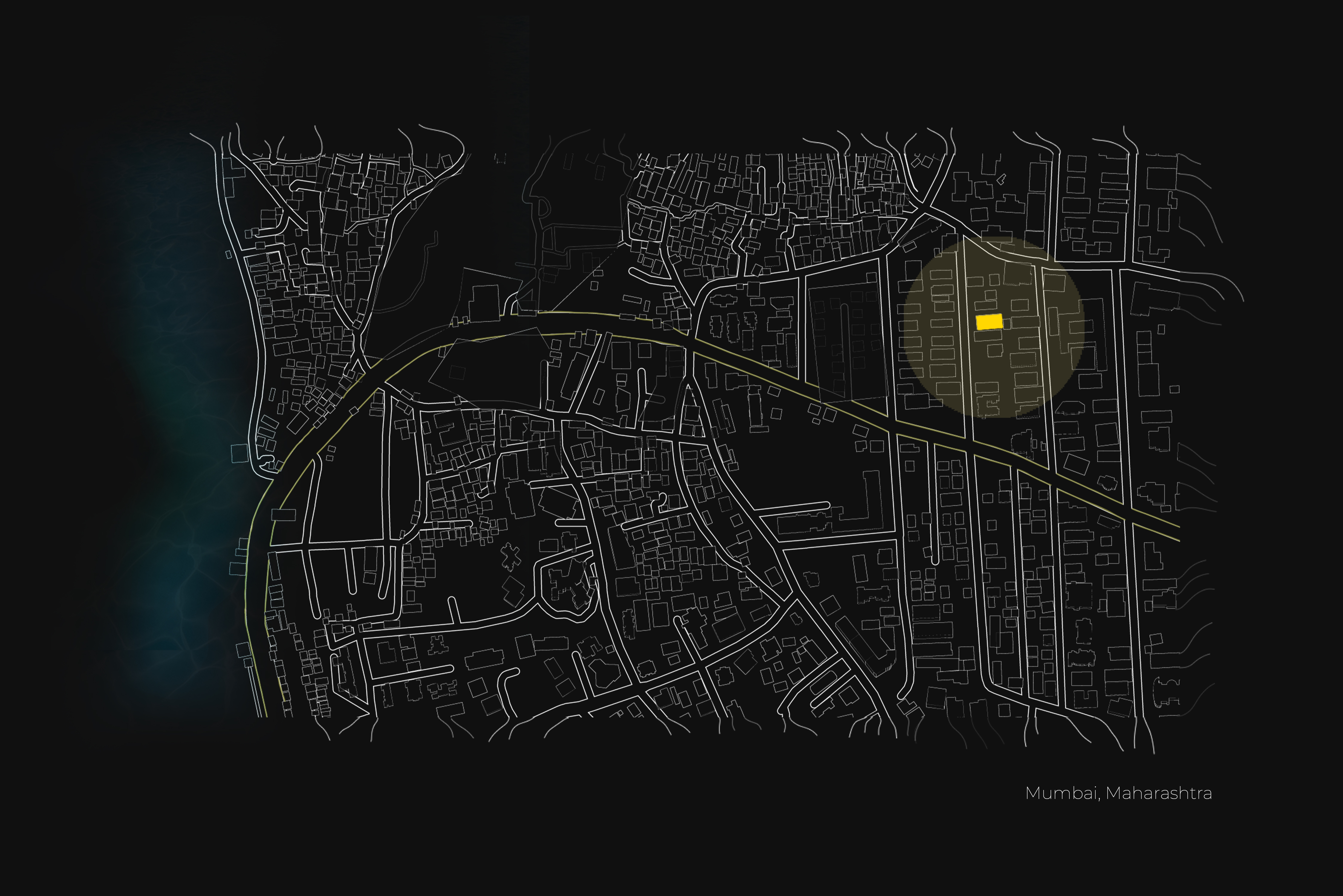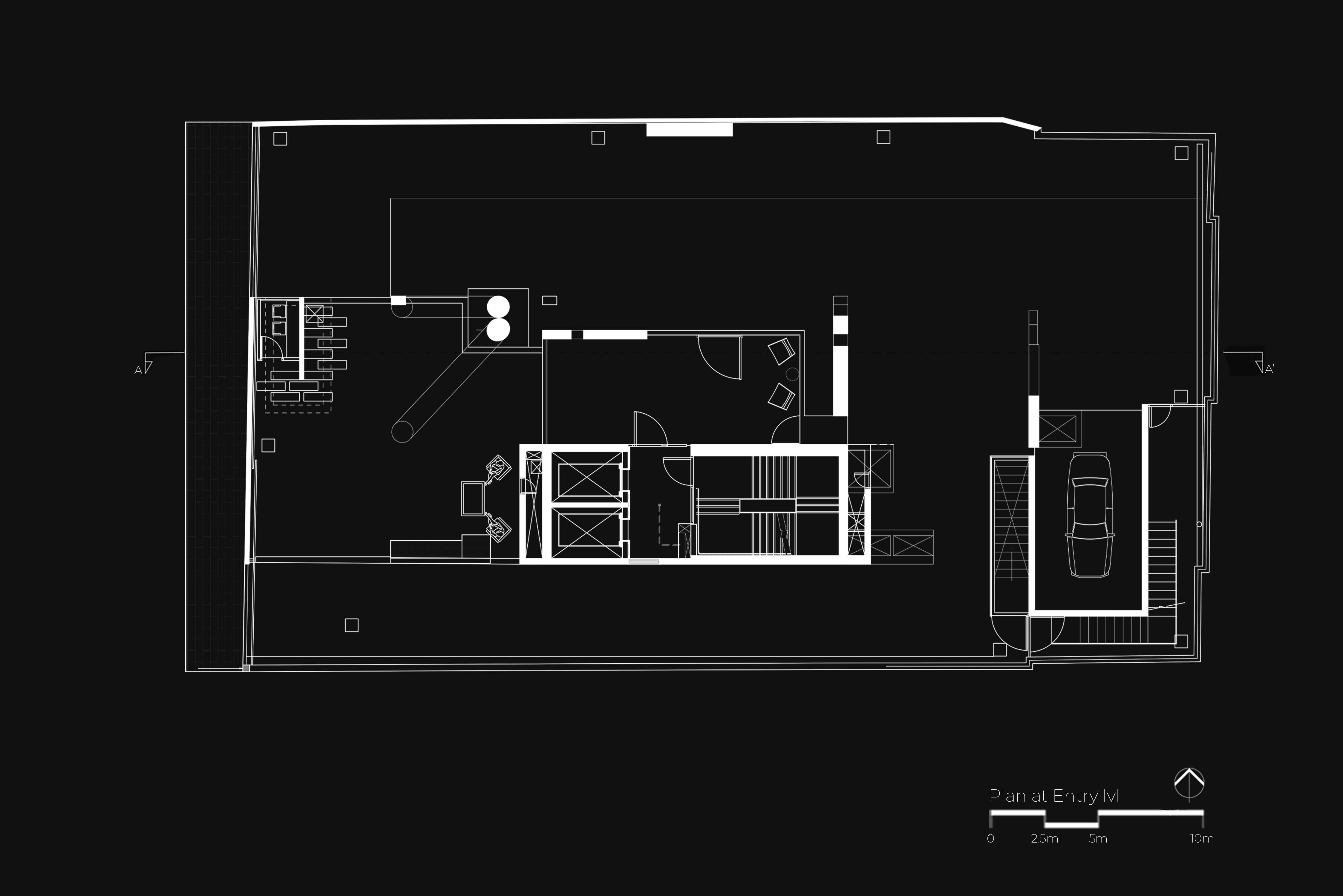Internal shifts in space and structure make the courtyard extend into the private spaces creating a network of deep voids and punctuated skylights. The sensation of living under the sky permeates through the house.
The streets of Khar used to be lined with low rise homes set back from the street and hidden behind trees and shallow front gardens. Densification and the demand for floor space has transformed these neighborhoods’ into rows of tall structures battling for light and air and eliminating any manner of dialogue with the street, owing to the concentration of “decorative” multi-storey parking structures at the ground level.
By accommodating the parking within the basement, the street level, up to a height of 11.0m is devoid of residential spaces. Instead, structure and volume are set back from the street and organized within a garden shaded by the cantilevered residential volumes above. At the street level the language of water, trees and low rise, set back spaces create the first point of mediation with the urban condition.
The individual “bungalows” are planned around central north facing courtyards with the public/private spaces located at the east and west zones to establish views into the funnels between the surrounding buildings. The individual courtyards bind the internal spaces and allow for natural light and breezes to flow through the house, behaving, in the hot months, like a thermal stack. Internal shifts in space and structure make the courtyard extend into the private spaces creating a network of deep voids and punctuated skylights. The sensation of living under the sky permeates through the house.
The western edge, with its views of the sea, and its propensity to be subjected to the maximum force of the elements is organized as a series of deep shaded verandahs with fixed and operable screens.
The Verandah spaces shift profiles within this tall void, based on the relationship with the interior, and each bungalow develops its own proportion of verandahs’. The operable screens create privacy and shading making those spaces perennially habitable.
Through the analysis and adaptation of vernacular devices a plausible solution to the urban impact of these rapidly proliferating building types seem possible.
J-House
- Rakesh Jain
- Khar, Mumbai
- 642.82 sq.mt. (6919.39 sq.ft.)
- 40,000 sq.ft.
- Completion (2015-2021)
- Arjun Malik, Rucha Pimprikar, Jay Jani, Jignesh Vadhia
- Bharath Ramamrutham
Consultants
- SEMAC, Hyderabad / Global Engg.
- SEMAC, Hyderabad / Nat. Engg.
- SEMAC, Hyderabad / Nat. Engg.
- SEMAC, Hyderabad / Nat. Engg.
Contractors
- Unique Concrete Technologies (UCT)
- Clinton (by client)
- Khodiyar Engg.
- Imperial Electricals Pvt. Ltd.
- Sapna Nostrum Enterprises (By client)



































